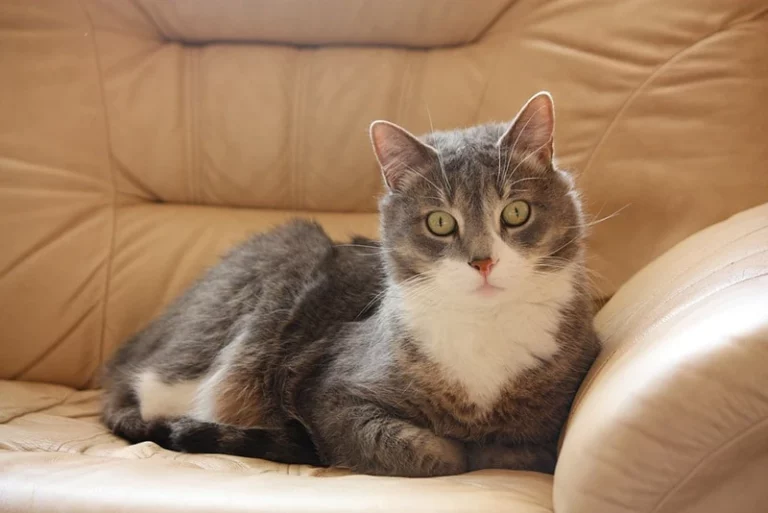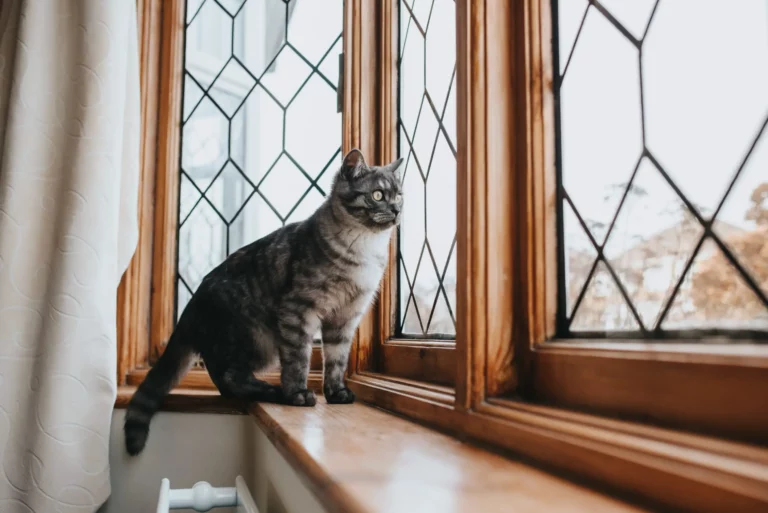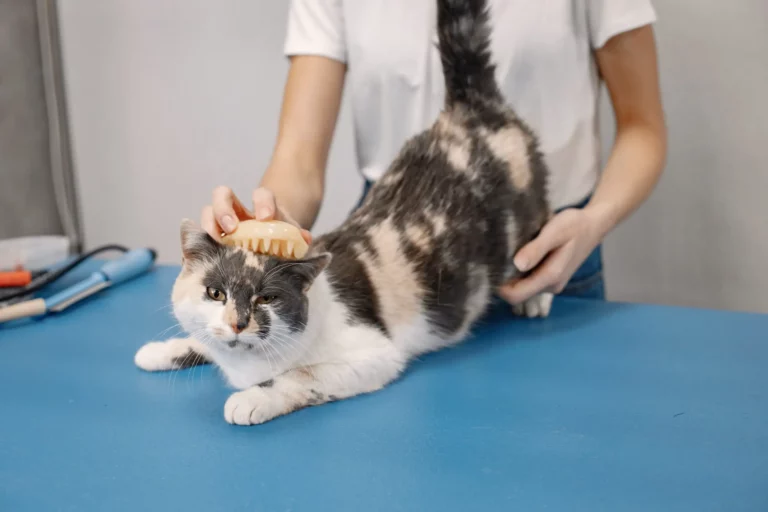Why Are Black Cats Called Voids?
Black cats have forever danced on the edges of human intrigue, captivating us with their mesmerizing gaze and sleek coats. Whether as symbols of superstition or as the unsung heroes of viral internet content, these felines have undeniably carved a niche for themselves in our cultural psyche.
The term “void” has recently gained momentum in describing them, adding another layer to their already enigmatic presence. But where did this descriptor come from, and what does it signify?
This article delves deep into the mysterious world of black cats and unravels the origin and meaning behind their curious moniker: the void.
Key Takeaways:
- The term “void” stems from the visual characteristic of black cats.
- Black cats have been associated with various myths and legends.
- The internet has played a significant role in popularizing the term.
- Cultural and historical perspectives provide deeper understanding.
Short answer: Black cats are often referred to as “voids” because their solid, dark coats can appear as vast, depthless spaces, much like a void. The term highlights the cat’s unique ability to visually blend into shadows, making them seem like a mysterious absence of space or light.
No products found.
Why Are Cats Called “Voids”?
The term “void” when referring to black cats is a relatively modern colloquialism, but the sentiment behind it has deeper roots. Let’s delve into why cats, specifically black ones, have earned this enigmatic title.
Visual Perspective
Black cats have the ability to appear as if they are absorbing all light, giving them a deep, shadowy appearance. Their coat doesn’t reflect light in the same way as lighter-colored cats.
This trait, combined with their often inscrutable expressions, means they can appear as a “void” or an absence of matter, especially in dimly lit settings.
Just as a void is an empty space where nothing exists, a black cat can seem to be a patch of emptiness, especially when they tuck their eyes and whiskers in while resting or sleeping.
Cultural and Mythological Ties
Throughout history, black cats have been associated with the mysterious, the unknown, and sometimes the supernatural. In many cultures, they’ve been tied to omens, witchcraft, and magic.
The concept of a “void” often resonates with the unknown or the unexplained, making the term fitting for creatures that have so often been linked to enigma.
Online Adoption
Internet culture has a way of adopting and amplifying particular trends or jokes. The idea of black cats as little “voids” found a home online, especially in pet communities and meme cultures.
Platforms like Reddit, Twitter, and Tumblr have communities of cat lovers who started referring to their black cats as “voids”, emphasizing their mysterious, all-absorbing presence.
No products found.
Endearing Affection
Lastly, referring to black cats as “voids” is, for many, an endearing term. It’s a way for owners and enthusiasts to acknowledge the unique charm of these felines. It’s less about the actual absence of matter and more about celebrating the captivating and enchanting presence of black cats.
In summary, black cats being called “voids” is a blend of their physical appearance, historical associations, online culture, and sheer affection from those who love them. It’s a term of endearment, mystery, and recognition of their unique place in both history and modern culture.
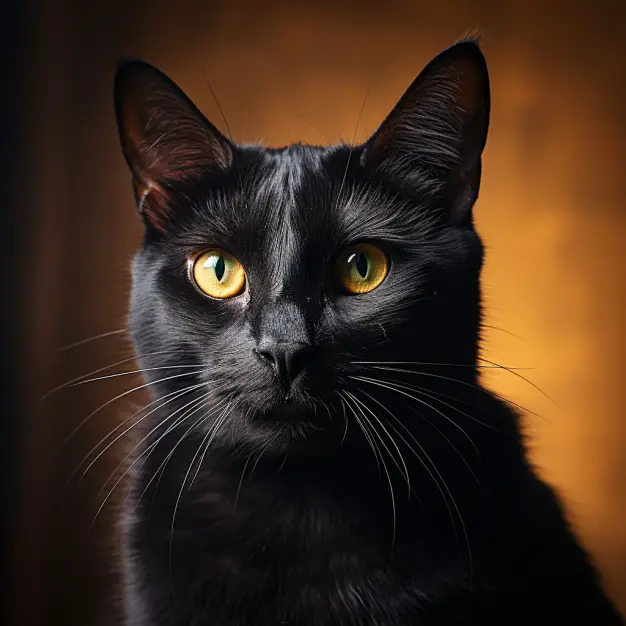
Historical and Cultural Ties of Black Cats
The enigma of black cats is deeply rooted in history and varied cultures. Their associations range from revered gods to symbols of witchcraft, making them one of the most culturally rich and fascinating creatures.
Black Cats in Ancient Civilizations
- Egyptian Era: In ancient Egypt, cats were the embodiment of grace and protection. The goddess Bastet, often depicted as a lioness or a woman with the head of a lioness, was the deity of home, fertility, and childbirth. Black cats, in particular, were considered especially sacred and were believed to bring good luck. Killing one, even accidentally, was thought to bring bad fortune.
- Chinese Folklore: Within Chinese culture, the black cat symbolizes prosperity and good fortune. They are often considered to bring positive energy and ward off evil spirits.
Witchcraft and European Folktales
- Medieval Europe: Black cats weren’t always seen in a favorable light. In medieval Europe, they were often associated with witchcraft. There was a widespread belief that witches could transform into black cats to roam freely. This association led to many black cats being harmed, especially during the witch trials.
- British Beliefs: Interestingly, while most of Europe viewed black cats as a symbol of bad luck or witchcraft, in Britain, especially in the Midlands, black cats were considered good omens. Gifting a bride with a black cat was believed to bring happiness and prosperity.
Modern Cultural References
- Halloween Symbolism: Black cats have become synonymous with Halloween in modern Western culture. Their silhouettes are iconic symbols of the holiday, representing mystery and the supernatural.
- Literary References: Literature, especially in the Gothic and mystery genres, often employs black cats as symbols of omens or mystery. Edgar Allan Poe’s short story, “The Black Cat,” is a prime example where the cat plays a central, symbolic role.
The Duality of Black Cats
What’s truly captivating about black cats is the duality of their representation. They straddle the line between good and bad luck, between reverence and fear. This balance makes them particularly intriguing, as they can be symbols of both protection and mystery, depending on the cultural context.
Their sleek black coats only add to the aura of mystique, drawing us into their enigmatic world.
Popularity Surge: The Internet’s Role
The digital age has transformed how we consume information, share experiences, and form communities. It’s no surprise that the internet, with its vast platforms and global reach, played a pivotal role in the resurgence of black cats’ popularity, especially their endearing label as “voids.”
Memes and Virality
- Origin of Memes: The term “meme” was coined by evolutionary biologist Richard Dawkins in his 1976 book, “The Selfish Gene.” However, it’s the internet that truly gave life to this concept. Memes have become a dominant form of online communication, swiftly carrying ideas, jokes, and trends across the world.
- Black Cat Memes: Memes featuring cats, including the mysterious black felines, have always been a staple of internet culture. The juxtaposition of the traditionally ‘mysterious’ black cat with humorous captions gave birth to numerous viral sensations. Black cats being labeled as ‘voids’ can be partly attributed to the humorous and endearing nature of these memes, which paint the felines as adorable, otherworldly entities.
Online Communities
- Cat Lovers Unite: Platforms like Reddit, Tumblr, and Twitter host vast communities where cat enthusiasts converge to share photos, anecdotes, and advice. These platforms became echo chambers amplifying the ‘void’ narrative, endearing more and more people to the charm of black cats.
- Hashtags and Trends: Social media platforms, especially Instagram, have seen a rise in hashtags like #BlackCat, #VoidKitty, and #BlackCatMagic. These tags offer a gathering space for black cat owners and admirers, further promoting their positive image.
Adoption and Advocacy
- Digital Activism: The internet’s influence isn’t just limited to memes and communities; it’s also been instrumental in advocating for the adoption of black cats. Historically, black cats were less likely to be adopted due to superstitions. Online campaigns highlighting their plight and challenging age-old myths have resulted in increased adoption rates for these ebony felines.
- Influencer Cats: The world has seen the rise of ‘cat influencers’ – cats with massive online followings. Black cats like Cole and Marmalade have become internet celebrities, using their platforms to advocate for cat welfare and debunking myths about black cats.
In essence, the internet has not just revived the allure of black cats but has rebranded them. Today’s ‘void’ is an internet-savvy, meme-friendly, and utterly lovable creature, far removed from the superstitions of the past.
The term “void” encapsulates this transformation, signifying both the cat’s deep, impenetrable black coat and its vast, unknowable internet appeal.
Beyond the Blackness: Physical and Genetic Aspects
When you gaze into the eyes of a sleek, ebony-furred feline, it’s easy to get lost in its mystical aura. But behind this captivating facade lies a tale woven by genes and biology. To truly understand why black cats are labeled “voids,” it’s essential to delve into the physical and genetic factors that gift them their unique appearance.
The Science of Melanin
- Melanocytes and Fur Color: Melanin is a pigment responsible for the color of a cat’s fur, eyes, and skin. It’s produced by cells called melanocytes. The presence of a higher concentration of melanin gives black cats their dark fur.
- Types of Melanin: There are two main types of melanin: eumelanin (responsible for black and brown colors) and pheomelanin (responsible for yellow and red hues). Black cats have a dominance of eumelanin, leading to their deep, uniform color.
Genetic Factors
- The Solid Black Gene: The gene responsible for a solid black color in cats is known as the ‘B’ gene. When a cat inherits the dominant version of this gene from its parents, it will be entirely black. On the other hand, inheriting recessive versions results in a chocolate or cinnamon color.
- Incomplete Dominance: Genetics isn’t always straightforward. In some cases, cats inherit a mix of dominant and recessive genes, leading to a smokey, grayish-black hue, rather than the deep black commonly associated with voids.
Health Implications
- Resistance to Diseases: Studies have suggested that the same genes responsible for black fur in cats might offer some resistance to certain diseases. This is an ongoing area of research, but it adds another layer of intrigue to our beloved black felines.
- Skin Protection: Just like in humans, melanin in cats serves to protect their skin from the harmful rays of the sun. This means that black cats have a natural defense mechanism against potential sun damage, although it’s essential to note that they can still be at risk, especially if they spend extended periods in the sun.
Eye Color Spectrum
- Green, Gold, or Yellow: Most black cats have striking green, gold, or yellow eyes. This is due to the high melanin concentration in their bodies, which not only affects their fur but also plays a role in their eye color.
- Blue-Eyed Black Cats: While rarer, some black cats possess deep blue eyes. This combination is especially captivating and can often be found in specific breeds or cats with particular genetic markers.
In summary, the deep black hue of these cats isn’t just a visual spectacle; it’s a testament to the intricate play of genetics and biology. Their color is a culmination of various factors, each adding a chapter to the fascinating story of the void kitty.
Breaking Down Myths
Black cats, particularly those referred to as “voids,” have long been the subjects of myths and misconceptions. While some of these tales have historical or cultural origins, many have been propagated by superstitions. Let’s address and debunk some of the most common myths surrounding black cats:
1. Bad Luck Omen:
For centuries, black cats were unjustly labeled as omens of bad luck or misfortune. This superstition is particularly prevalent in Western cultures. Truth: Cats, regardless of their color, are simply pets with individual personalities.
They don’t possess the power to bring bad luck. In many cultures, black cats are actually considered good luck!
2. Witches’ Familiars:
There’s a longstanding myth that black cats are witches’ companions or “familiars” used in dark magic. Truth: While cats were indeed associated with witches during the European witch trials, this was a product of hysteria. Today, black cats are like any other cats, seeking love and attention rather than being involved in any mystic rituals.
3. Black Cats are Aggressive:
Some believe that black cats have a more aggressive nature than cats of other colors. Truth: There’s no scientific basis to claim a specific fur color relates to temperament. Each cat’s behavior is a mix of genetics, upbringing, and environment.
4. Less Adoptable:
It’s a widespread belief that black cats are less likely to be adopted from shelters due to their color. Truth: While they might sometimes be overlooked because of superstitions, many shelters have reported equal adoption rates for cats of all colors.
Plus, many people actively seek out black cats because of their elegance and beauty.
5. They’re All the Same:
Some assume all black cats look and behave the same, lacking individuality. Truth: Just like humans, every cat is unique. Their personalities, quirks, and habits differ widely. Two black cats can be as different from each other as night and day.
6. Black Cats and Halloween:
There’s a myth that black cats are in danger during Halloween because of pranks or rituals. Truth: While it’s essential to ensure all pets are safe during holidays, there’s no widespread evidence supporting this claim. However, it’s always a good practice to keep pets indoors during festive seasons.
Understanding and debunking these myths helps foster a more informed and compassionate society. By shedding light on these misconceptions, we can ensure that black cats are treated with the love, respect, and care they deserve.
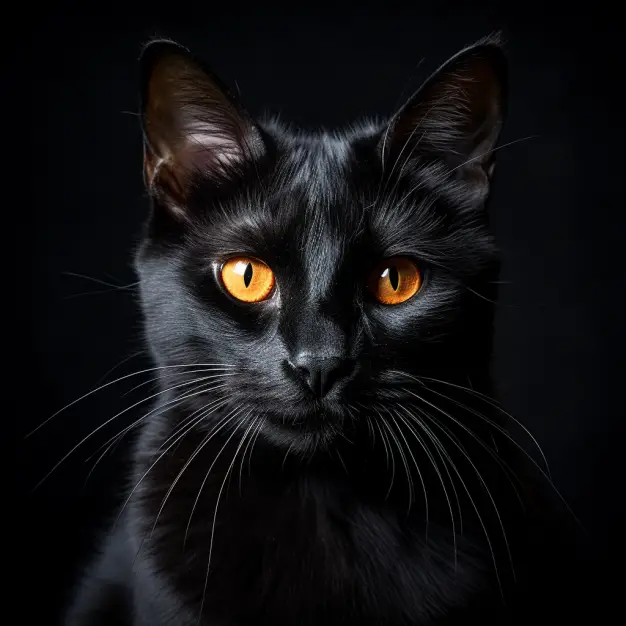
Black Cats in Pop Culture
Black cats have carved a niche for themselves in pop culture. From movies and literature to advertising and fashion, these ebony felines have been both celebrated and vilified, often standing as symbols of mystery, magic, and misfortune. Let’s explore some iconic representations of black cats in popular culture:
1. Sabrina the Teenage Witch:
Who could forget Salem, the sassy, talking black cat in “Sabrina the Teenage Witch”? Originally a warlock punished by being turned into a feline, Salem provided comic relief with his witty remarks and human-like antics.
2. Edgar Allan Poe:
In his short story “The Black Cat,” Poe wove a chilling tale of a man’s descent into madness, using a black cat as a central symbol of his guilt and eventual downfall.
3. Felix the Cat:
One of the most recognizable cartoon characters from the silent film era, Felix the Cat’s misadventures and iconic grin have entertained audiences for generations.
4. Coraline:
In Neil Gaiman’s novel and its subsequent animated adaptation, a mysterious black cat serves as Coraline’s guide, protector, and sometimes critic in the eerie parallel world she discovers.
5. The Simpsons:
Snowball II, the family’s beloved black cat, might not play a major role in every episode, but her presence in the Simpson household is undeniable.
6. Fashion World:
Black cats have become fashion icons in their own right. From cat-shaped purses to silhouetted prints on clothing, the sleek and stylish image of the black cat has found its way into haute couture and street fashion alike.
7. Superstitions and Halloween:
No Halloween scene is complete without the silhouette of a black cat, often with an arched back, ready to pounce. They’ve become synonymous with the spooky holiday, appearing on decorations, candies, and costumes.
8. Catwoman:
While not a black cat herself, DC’s iconic anti-heroine Catwoman, or Selina Kyle, has always had a deep connection with cats, often accompanied by her pet black cat. Her feline-themed crimes and costumes further cement the bond between black cats and mystery.
Throughout history, black cats in pop culture have oscillated between being symbols of bad luck and embodiments of elegance and charm. Their prominence in various mediums showcases society’s fascination with these enigmatic creatures, making them some of the most celebrated pets in popular imagination.
Black Cats Around the World
Black cats have been viewed through different cultural lenses across the globe. Their roles, interpretations, and beliefs associated with them can greatly differ from one region to the next. Delving into various traditions and folklore can provide a fascinating insight into the diverse perceptions of these ebony felines.
1. Japan:
In the Land of the Rising Sun, black cats are generally considered good luck, especially for single women. Owning a black cat is believed to attract potential suitors. Additionally, the famous “Maneki Neko” or “beckoning cat” figurine, while found in various colors, is often seen in black to ward off evil spirits.
2. United Kingdom:
In many parts of the UK, it’s considered good luck for a black cat to cross your path. This is in stark contrast to many parts of the world where the same act is considered an omen of bad luck.
3. Italy:
The Italian belief goes, “If a black cat sits on the bed of a sick person, death is near.” This mirrors the dark connotations associated with black cats in various European cultures.
4. Germany:
A nuanced belief exists here. If a black cat crosses your path from right to left, it’s considered a bad omen. However, if the cat moves from left to right, it foretells a favorable turn of events.
5. Russia:
In Russia, all cats are considered lucky, and black cats are no exception. They’re often associated with prosperity and good fortune.
6. Norse Mythology:
Freyja, the Norse goddess of love, beauty, and fertility, had a chariot that was pulled by two large black cats. Over time, they became symbols of mystery and magic in various Norse tales.
7. Egypt:
Ancient Egyptians revered all cats, and black cats were no exception. Killing a cat, irrespective of its color, was considered a grave offense. Cats were often depicted in art and were mummified and buried with their owners.
8. Maritime Folklore:
In seafaring tales, it was believed that a black cat on board a ship would ensure a safe voyage, while to sailors’ wives and girlfriends, keeping a black cat at home would ensure their loved one’s safe return from the sea.
9. France:
In parts of French countryside, there’s a belief about “matagots” or “magician cats.” When treated well, these black cats could bring good fortune to the household.
Exploring the global tales and traditions related to black cats provides a tapestry of contrasting beliefs. Some cultures revere them, some fear them, and for others, they remain enigmatic beings of mystery, always capturing human imagination.
Frequently Asked Questions
Why do black cats seem to “absorb” light?
Black cats have a higher concentration of melanin in their fur. This pigment absorbs most of the visible light that hits it, causing less light to reflect back to our eyes. As a result, black cats often appear as if they’re absorbing light, giving them a rich, deep hue that sometimes seems impenetrable.
How did the term “void” spread so quickly online?
The term “void” for black cats gained traction on various social media platforms and meme communities. As with many internet phenomena, once a particular term or image gains popularity in one place, it quickly spreads through shares, reposts, and mentions.
The inherent mysterious nature of black cats and the term’s playful and enigmatic connotation resonated with many, propelling its virality.
Are black cats really unlucky?
The belief in black cats being unlucky is a superstition that varies from culture to culture. In many Western cultures, black cats crossing one’s path are often considered an omen of bad luck.
However, in other parts of the world, like the UK and Japan, black cats are symbols of good fortune. It’s essential to remember that these are cultural beliefs and not based on factual evidence about the cats themselves.
Do black cats have a specific personality trait?
No, the color of a cat’s fur doesn’t determine its personality. Each cat, regardless of its coat color, has a unique personality shaped by genetics, upbringing, environment, and experiences. While some might attribute specific traits to black cats due to cultural tales or personal anecdotes, it’s not scientifically supported.
How can one adopt or rescue a black cat?
Adopting or rescuing a black cat is similar to adopting any other cat. Start by visiting local animal shelters, rescue groups, or cat-specific adoption events. It’s worth noting that, unfortunately, black cats often have lower adoption rates due to superstitions.
Adopting one not only provides a loving home but also helps dispel myths surrounding these beautiful creatures. Always prioritize adopting over purchasing, as it gives many cats a second chance at a happy life.
Conclusion
In the vast world of feline fascination, the enigmatic black cat stands as a beacon of curiosity, cloaked in tales and traditions. From being called “voids” to their roles in folklore, these mysterious creatures have weaved their way into our cultural tapestry in both light and shadow.
Yet, beyond the myths and internet memes, they remain, first and foremost, loving companions deserving of admiration and affection. Whether they are seen as bearers of luck or simply as captivating pets, one thing is certain: black cats have a unique charm that’s impossible to resist.
Let us cherish these midnight-furred friends, understanding them beyond the myths, and celebrating the magic they bring into our lives.
Additional Resources
For those interested in diving deeper into the fascinating world of black cats and their unique place in history and culture, here are some recommended resources:
Books:
- “The Black Cat: A Cultural History” by Lance Wright
- “Black Cats and Superstitions” by Chloe Rhodes
Website:
Documentaries:
- “Shadows and Whiskers: The Black Cat Phenomenon” – A documentary exploring the historical significance and modern-day perceptions of black cats.
Online Forums:
Adoption and Rescue:
- Black Cat Rescue – A rescue organization dedicated to saving black cats from high kill shelters.
- Petfinder – An online platform to adopt pets, with a special filter to find black cats near you.
Exploring these resources will provide deeper insights and understanding, allowing us to further appreciate the captivating allure of black cats. Whether you’re a proud cat parent or simply a curious enthusiast, there’s always more to learn about these dark-furred feline wonders.

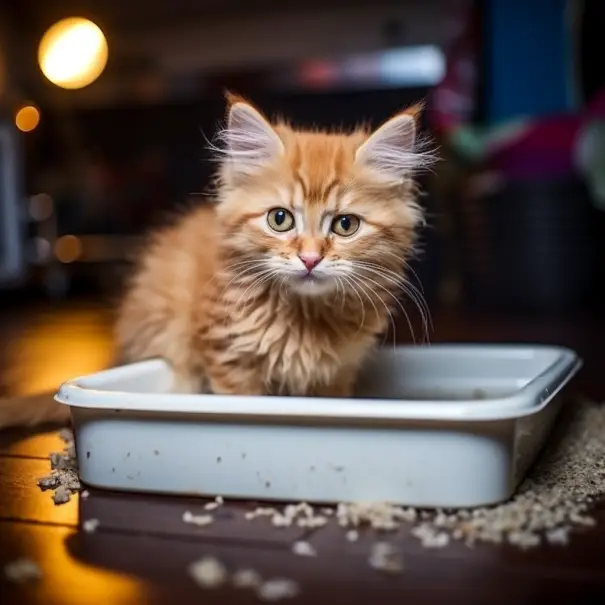
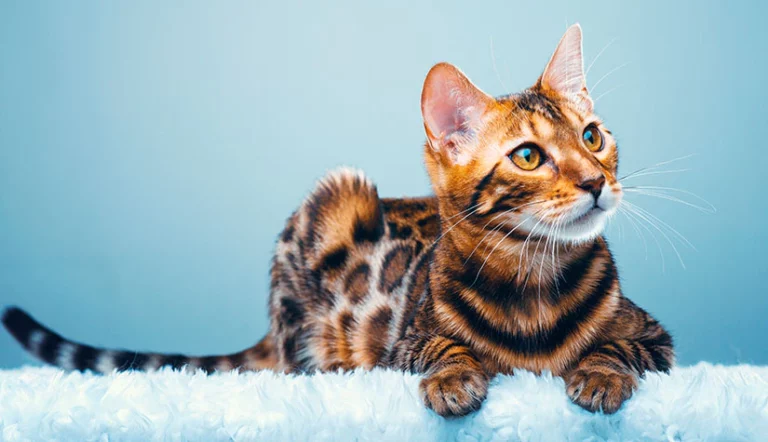
![Why Does My Cat Keep Pooping Outside the Litter Box? [5 Things You Can Do]](https://www.warmlypet.com/wp-content/uploads/2023/01/senior_cat_not_using_litter_box-1024x548-1-768x411.webp)
